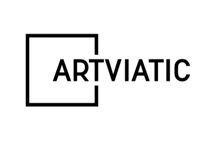
Sample Translations
Start of an interview with artist Li Chevalier for Artviatic's online magazine:
NEWS OF THE ART WORLD: Starting with the two words 'link' and 'ink', which seem to be key words for you, could you explain your work in terms of East and West, of figurative work and abstraction?
LI CHEVALIER: I must straight away pay tribute to François Julien, the famous sinologist who devoted a huge number of books to Chinese pictorial art. In the course of an interview about the emergence of contemporary ink painting in which I presented my own work, it was he who used the words 'link and ink': this title that he gave me for a potential exhibition perfectly fits my situation, my search and also myself as an artist.
Link because I was born in Beijing and came to France in the 1980s. I have lived since then not only between China and France but also between Asia and Europe. I've lived in Indonesia, Japan, Qatar, then back to China, followed by 2 years in England for my studies and finally multiple trips to Italy. Having grown up in an aesthetic environment based on the art of calligraphy and traditional ink painting, I discovered Japan when I was an adult following a long stay in Europe and this encounter with Japanese culture aroused a very strong feeling of nostalgia in me. I had the impression that I was in the setting of a classic Chinese novel, a place where my ancestors had lived. It was as though an ancient culture was reappearing that had been lost beneath ideological destruction. Japan most certainly enjoys the influence of Confucian culture on a pictorial level, on a calligraphic, poetic level...
Artist Biography: Michel Soubeyrand
Born in Montpellier in 1957, Michel Soubeyrand grew up with an artist mother, and at the age of 17 went to the École des Beaux-Arts in Paris. He joined the painting department, but it was sculpture that fascinated him. He went on to exercise his creativity in the service of television and cinema advertising for about twenty years, developing special effects and 'animatronics' (robotic puppets).
It was at the beginning of the 2000s that he decided to devote himself entirely to his art, setting up in a studio in Pérols, in the Hérault department of France.
Always eager to experiment, he creates pictures made up of multiple layers of different pictorial materials – modern and traditional – each covered with a layer of varnish, nowadays even trying to include gold leaf and LED bulbs. Their style - a mass of coloured interlacing out of which emerges a figurative subject - was inspired, he has said, by album covers from the rock group Yes, which was at its peak in the 1970s. These now tend towards abstraction.
His great passion remains sculpture, however, which he particularly developed following the death of his beloved dog, that he honoured with a mausoleum adorned by a statue representing her on horseback. After this, the anthropomorphised dog became his favourite subject, wearing different costumes and accessories in the style of comic strips, cartoons, films or other works aimed at children, to which the artist had previously contributed: '...I talk about myself in my works because they reflect different sides of my life...'. Indeed the cinema also inspired him to create, with irony, certain of his dogs such as Dog Vador armed with a bone – an avatar of Darth Vador armed with a laser in Star Wars – as an illustration of his own journey. But other 'art toys' in connection with human tragedies, such as Mao Dog, propose more caustic levels of interpretation. This definitely seems to be the case with Jungle Toys, a figure this time of a smiling Mickey Mouse composed of an assemblage of skulls; an image that is used again as a base element in Vanity Table or Et Dieu ('And God'), suggesting a reflection on the meaning of life.
Dog has its feminine counterpart, which has a buxom appearance that one might suspect has been enhanced! Swaggering with her water pistol (Cosmic Girl), and with hair that often looks like a Smurf's hat, she sometimes adopts a more ambiguous and serious tone when linked with sexuality (Slave Dog 'total enjoyment').
Describing himself as a 'sorcerer's apprentice', the artist constantly tests techniques and materials, developing his work over long periods. Also practising bas-relief and photography, he makes works in very varied formats – from small-scale to monumental versions – using resin that he covers with coloured lacquer, tattoos, chrome, or chromium- or nickel-plated bronze.
Michel Soubeyrand has created Pop Art of a new kind.
